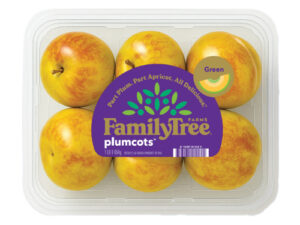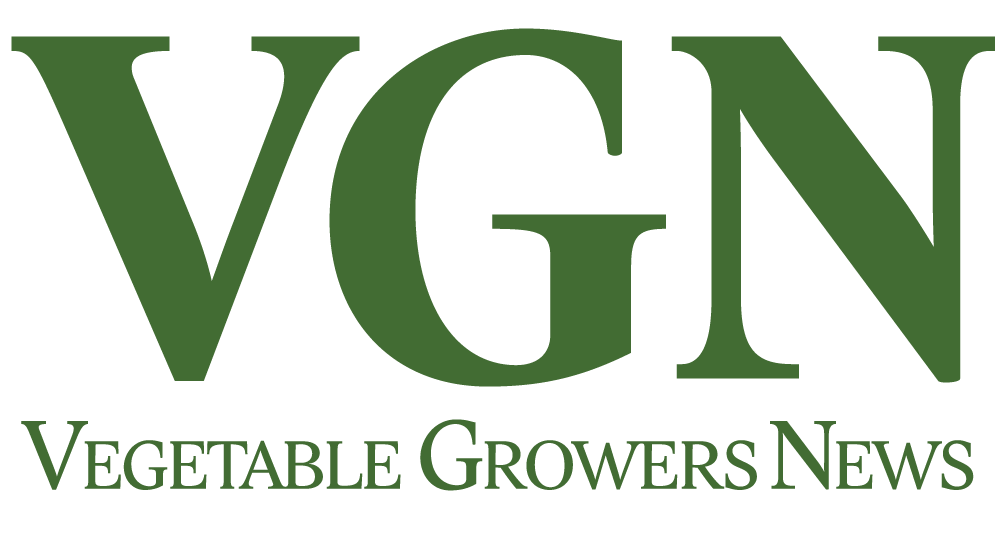Packaging primary focus in fresh produce supply chain
With global import pressures making the already delicate and time-sensitive process of packaging and shipping fresh produce even more crucial to companies’ bottom lines, ensuring the product arrives on time and in top-notch condition has become paramount.
Atlanta, Georgia-based specialty packaging design and distribution company Veritiv provides a range of solutions to customers in North America and worldwide. Chris Kampsen, Veritiv enterprise account executive, talked with Produce Processing about the national and international factors shaping those solutions.
Produce Processing: Let’s start with an overview of the services Veritiv provides.
Kampsen: I like to tell customers we do everything from the clamshell that your berries are in to the bag your grapes are in — or lemons or vegetables, the pouch bags they’re in — to the label that’s on the clamshell, ultimately the box it goes in, the strapping or the ventilated film that wraps it once placed on the pallet — pretty much everything from start to finish to get your fresh produce from the farm to the market, including the creative design and development work.
Produce Processing: What sort of specific packaging challenges does fresh produce present?
Kampsen: Retailers want 52-week-per-year supply. They don’t want to deal with a grower, marketer or packer that is only able to supply one particular region for a very short period of time. They would much prefer to work with a large, national or multi-national brand that can supply them over 52 weeks out of the year. In order to do that, they need to have fruit within each commodity coming from a multitude of different regions, which includes the U.S., Mexico, Canada, Peru — a variety of different major fresh produce-growing regions. Veritiv is one of the only large packaging companies with presence in most of the locations where these major U.S. retailers receive supply from. We are then able to help ensure consistency with labeling and packaging, so when you receive a large brand’s fresh berries on the East Coast, you’re going to have the same experience on the West Coast.
Having materials and packing things as close as you can to the source and ultimately the market is ideal — less time in the truck, less time in transit. (Veritiv is working with) a large U.S. and Peru blueberry grower. They grow about 40 million pounds of blueberries in Peru. They’re going to be importing in bulk around four million pounds, some to the East Coast, some to the West Coast, starting in September. We have the ability to supply them in both locations and help ensure their brand look and feel, and that what’s important to them is executed on both sides of the country.

Produce Processing: Tell us about the key considerations in shipping fresh produce.
Kampsen: Some commodities are moisture-sensitive. Some are sensitive to human touch because oils on the skins will stain the fruit. We work with the customers to ensure that we understand their unique needs, where they’re shipping it and how they’re shipping it — storage requirements, circulation to ensure the fruit gets cooled and maintains a cool temperature, that there’s enough ventilation in the packaging to provide enough cooling without condensation development inside of the package. If you don’t have enough air flow, the fruit, being a living, breathing, perspiring object, will produce heat inside of the packaging, which can then cause condensation. You need to have sufficient air flow to not develop condensation inside of the packaging.
Produce Processing: What about innovations to help extend shelf life once the produce arrives?
Kampsen: We have a couple of solutions that are intended to help extend shelf life. Those include S02 pads. S02 is sodium metabisulfite, (which) is embedded in these laminated sheets that we sell. We’ve sold them for over 25 years in table grapes to help control mold. We are one of the folks who sell them in California for the table grape industry. In blueberries, we have the only approved blueberry S02 pad. It was approved about a year and half ago in the U.S. to help control botrytis, which is a gray mold.
(The pads) are placed in the box. They convert sodium metabisulfite into a gas, and the S02 gas then inside of the box works as a killing agent for mold spores. The killing of those mold spores helps to reduce decay so the mold doesn’t spread throughout the box. We’re in the process of approvals for those in blackberries and raspberries as well. We hope to have approval in the next 12 to 18 months for those commodities.
Produce Processing: In February, Veritiv achieved silver medal status from global business sustainability accessor EcoVadis. How does sustainability drive innovation?
Kampsen: It’s a huge factor, (but) with fresh produce, food waste can be a bigger concern, because plastic might honestly be the best solution for the product. You can pack it at a higher speed. You can protect the product more efficiently to deliver the product through the supply chain. Paper is good in many regards, but for some items, it just isn’t a good fit. It actually can cause more food waste depending upon what the application is. So it’s really important to understand what the application is and what the consequences or benefits or risks of alternative sustainable packaging might be as it relates to the actual long-term shelf life and food waste implications of a given package.
Produce Processing: What developments are coming down the R&D pike?
Kampsen: We’re in the middle of a brand-new mango prototype right now for tree-ripened mangos. There’s a push toward mango consumption, and the theory this particular customer has is that part of the reason consumption of mangoes in the U.S. is low is that people haven’t eaten them at peak ripeness so they haven’t had a good experience. The idea is: How can we deliver mangoes to retail that are very ripe? In order to do so, we have to have a container that will support it and not allow leaks and messy delivery that nobody would want to ultimately eat.
There’s also a lot of movement toward automation in bagging. It moves more fruit. It moves smaller- sized fruit. It helps move fruit through retail as a grab-and-go item. There was data years ago that produce stand-up pouch bags did something in the neighborhood of a 30% increase in throughput of produce in retail, so there’s a huge demand for stand-up pouches in a variety of commodities. Historically, much of the agricultural world has hand-packed its products because they are so perishable, and handling needs to be very delicate. We’ve done a lot of work with large growers around automating the bagging of the stand-up pouch.
Produce Processing: What are the biggest challenges facing produce packagers right now?
Kampsen: There’s a massive challenge right now with water, with import pressures and tariffs. There’s a lot of global macroeconomic challenges that exist, so ensuring that they have quality fruit, that it arrives cost-effectively to the customers, is really important. (Produce is) extremely perishable stuff. It needs to be given proper attention and treated accordingly










